-
 Bitcoin
Bitcoin $109,459.7682
2.44% -
 Ethereum
Ethereum $2,598.6052
6.29% -
 Tether USDt
Tether USDt $1.0003
0.00% -
 XRP
XRP $2.2734
3.95% -
 BNB
BNB $661.4886
1.58% -
 Solana
Solana $155.4825
4.35% -
 USDC
USDC $0.9999
-0.02% -
 TRON
TRON $0.2838
1.04% -
 Dogecoin
Dogecoin $0.1740
8.25% -
 Cardano
Cardano $0.6047
9.04% -
 Hyperliquid
Hyperliquid $40.2302
6.50% -
 Sui
Sui $2.9863
10.05% -
 Bitcoin Cash
Bitcoin Cash $509.5786
0.60% -
 Chainlink
Chainlink $13.8156
6.03% -
 UNUS SED LEO
UNUS SED LEO $9.0142
0.69% -
 Avalanche
Avalanche $19.0337
8.68% -
 Stellar
Stellar $0.2438
5.17% -
 Toncoin
Toncoin $2.9012
3.59% -
 Shiba Inu
Shiba Inu $0.0...01210
6.20% -
 Litecoin
Litecoin $90.0882
7.05% -
 Hedera
Hedera $0.1597
8.53% -
 Monero
Monero $326.3340
2.88% -
 Polkadot
Polkadot $3.6365
9.32% -
 Bitget Token
Bitget Token $4.6162
2.72% -
 Dai
Dai $1.0001
0.00% -
 Ethena USDe
Ethena USDe $1.0002
-0.01% -
 Uniswap
Uniswap $7.6403
10.47% -
 Pepe
Pepe $0.0...01060
12.03% -
 Aave
Aave $281.3664
7.56% -
 Pi
Pi $0.4992
1.76%
What is a CME gap for Bitcoin?
A CME gap occurs when Bitcoin's price shifts significantly over weekends or holidays, creating a visible disconnect in CME futures charts as trading resumes.
Jul 03, 2025 at 05:49 pm
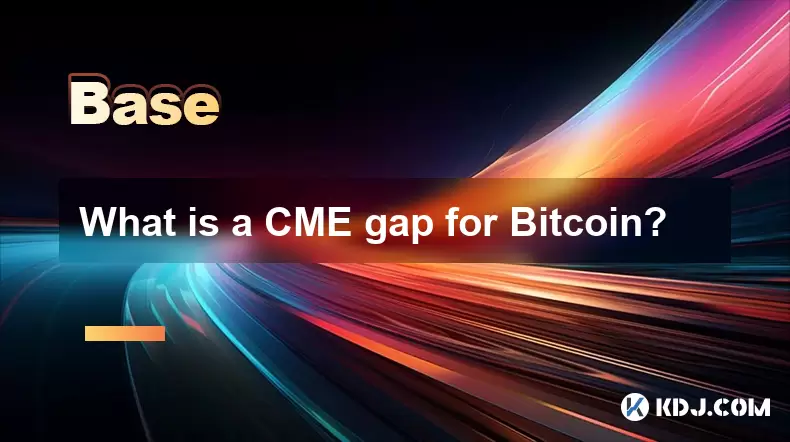
Understanding the Concept of a CME Gap
A CME gap refers to a discrepancy in price between the closing price of Bitcoin on the Chicago Mercantile Exchange (CME) and its opening price when trading resumes. This phenomenon occurs because the CME operates during specific hours, typically aligned with traditional market hours, while cryptocurrency markets operate 24/7. When the exchange closes for the weekend or holidays, significant price movements can occur in the broader crypto market that aren’t reflected in the CME futures data.
The result is a visible "gap" in the CME Bitcoin futures chart where no trades occurred but the underlying asset's value changed significantly. These gaps are important for traders who use technical analysis since they often act as potential support or resistance levels.
Important:
The CME gap specifically applies to Bitcoin futures contracts traded on the CME platform, not spot prices on other exchanges.How Are CME Gaps Formed?
CME gaps form due to the mismatch between the continuous nature of cryptocurrency trading and the scheduled operation of the CME. Here’s how it typically happens:
- The CME Bitcoin futures market closes on Friday afternoon.
- Over the weekend, news events, regulatory changes, or macroeconomic shifts may cause Bitcoin’s price to rise or fall sharply on global exchanges.
- On Monday morning, when the CME reopens, the first trade may open at a price significantly different from Friday’s close — creating a visible gap on the chart.
This type of gap is most commonly seen after weekends or public holidays when the futures market is closed for an extended period.
Identifying CME Gaps on Charts
To identify a CME gap, traders typically look at candlestick charts of Bitcoin futures on the CME. The key visual characteristics include:
- A large empty space between the closing price of one session and the opening price of the next.
- Often appears as a vertical line or area where no trading occurred.
Here’s how to spot a CME gap step by step:
- Use a time-based chart like a daily or weekly chart.
- Look for a point where the previous candle’s high or low doesn’t overlap with the next candle’s open.
- Confirm that the gap corresponds with CME closing times (usually Friday close and Monday open).
Some platforms automatically highlight these gaps using indicators or annotations to assist traders in identifying them quickly.
Why Do Traders Pay Attention to CME Gaps?
Traders monitor CME gaps for several strategic reasons:
- Technical Analysis Relevance: Many traders believe that unresolved gaps tend to get "filled" eventually, meaning the price returns to the level of the gap before continuing its trend.
- Market Sentiment Indicators: Large gaps can indicate strong sentiment shifts in institutional markets.
- Futures vs Spot Price Dynamics: Since CME futures are priced differently than spot markets, tracking these gaps helps assess divergence between institutional and retail investor behavior.
It’s crucial to note that while some traders base strategies around gap fills, there’s no guarantee that a gap will be filled immediately or at all.
Strategies Involving CME Gaps
Several trading strategies revolve around CME gaps, especially among those who follow technical setups closely. Here are some common approaches:
- Gap Fill Strategy: Traders wait for the price to return to the gap level and place trades expecting a reversal or continuation.
- Breakout Confirmation: If the price continues moving away from the gap without returning, it may signal a strong trend.
- Volume and Order Flow Monitoring: Observing volume patterns around the gap can provide insights into whether the gap is likely to hold or break.
Implementing these strategies requires careful risk management, including stop-loss orders and position sizing tailored to individual risk tolerance.
Frequently Asked Questions About CME Gaps
Q: Can CME gaps only occur on weekends?
No, while most CME gaps occur over weekends, they can also happen during long holiday periods or unexpected exchange closures.
Q: Are CME gaps unique to Bitcoin?
No, CME gaps also appear in other assets traded on the CME, such as commodities and equities indices. However, their impact and frequency can vary depending on the asset’s volatility.
Q: Should I always expect a gap to fill?
Not necessarily. While many traders anticipate CME gap fills, there’s no rule stating that every gap must be filled. Market conditions, liquidity, and sentiment play major roles in determining outcomes.
Q: How do CME gaps affect day traders versus long-term investors?
Day traders may use CME gaps for short-term entry and exit points, while long-term investors might view them as minor fluctuations unless accompanied by significant fundamental changes.
Disclaimer:info@kdj.com
The information provided is not trading advice. kdj.com does not assume any responsibility for any investments made based on the information provided in this article. Cryptocurrencies are highly volatile and it is highly recommended that you invest with caution after thorough research!
If you believe that the content used on this website infringes your copyright, please contact us immediately (info@kdj.com) and we will delete it promptly.
- ZKasino's $30M Rug Pull: Founder Arrested in UAE – Justice Served?
- 2025-07-04 00:30:13
- Bitcoin's Bull Run: Standard Chartered and the ETF Inflow Effect
- 2025-07-04 00:30:13
- PEPE Price Surges Amid Golden Cross: Memecoin Market Heats Up!
- 2025-07-03 23:10:15
- Cooking.City Launches on Solana: A Recipe for On-Chain Success?
- 2025-07-03 23:10:15
- Meme Coins, PENGU, and Investment: Riding the Crypto Wave
- 2025-07-03 23:50:12
- Bitcoin's Wild Ride: ETF Performance, Unemployment Data, and a $90K Dip?
- 2025-07-03 22:35:14
Related knowledge

What is open interest in derivatives?
Jul 03,2025 at 02:49pm
Understanding Open Interest in DerivativesOpen interest is a critical metric used in the cryptocurrency derivatives market, particularly when analyzing futures and options contracts. It represents the total number of outstanding contracts that have not been settled or closed by either party involved. Unlike trading volume, which counts all trades made i...

What is a CME gap for Bitcoin?
Jul 03,2025 at 05:49pm
Understanding the Concept of a CME GapA CME gap refers to a discrepancy in price between the closing price of Bitcoin on the Chicago Mercantile Exchange (CME) and its opening price when trading resumes. This phenomenon occurs because the CME operates during specific hours, typically aligned with traditional market hours, while cryptocurrency markets ope...
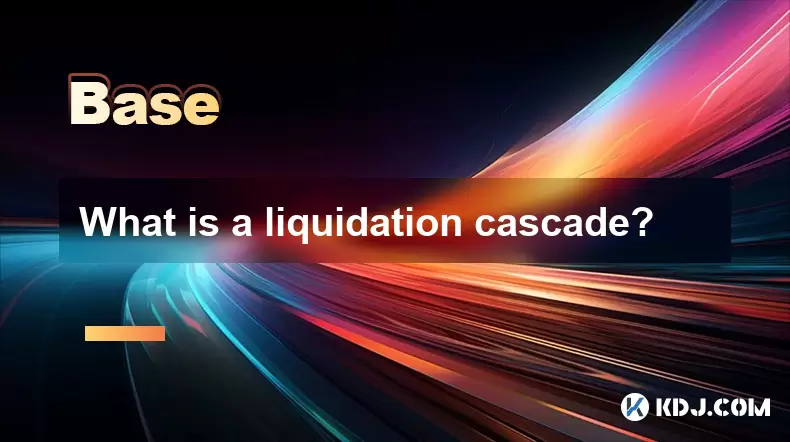
What is a liquidation cascade?
Jul 03,2025 at 07:15am
Understanding the Concept of LiquidationIn the realm of cryptocurrency trading, liquidation refers to the process by which a trader's position is automatically closed due to insufficient funds to maintain the leveraged trade. This typically occurs when the market moves against the trader's position and their account equity falls below the required maint...
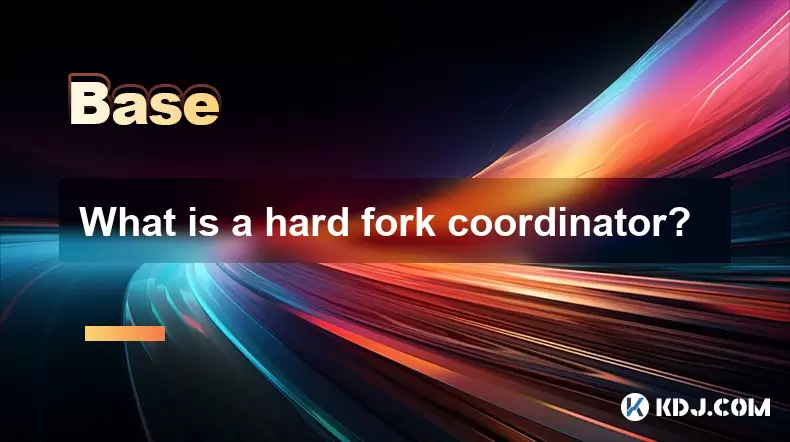
What is a hard fork coordinator?
Jul 03,2025 at 12:42pm
Understanding the Role of a Hard Fork CoordinatorIn the world of blockchain and cryptocurrencies, a hard fork coordinator plays a critical role during major network upgrades. A hard fork is a significant change to a blockchain’s protocol that makes previously invalid blocks or transactions valid (or vice versa). This type of upgrade requires all nodes o...
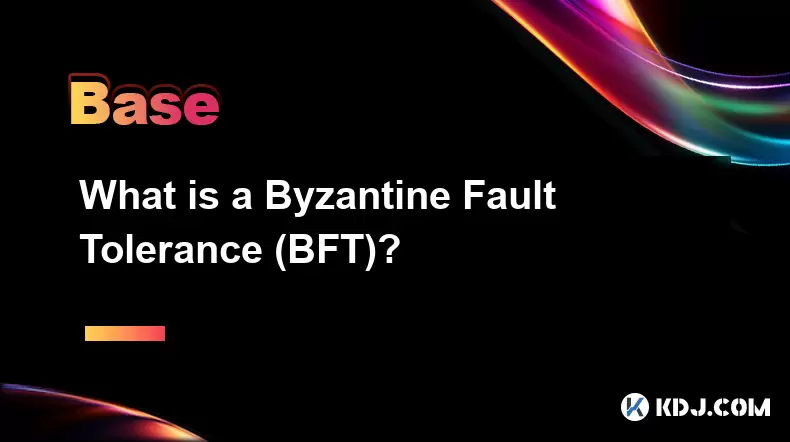
What is a Byzantine Fault Tolerance (BFT)?
Jul 03,2025 at 11:49am
Understanding the Concept of Byzantine Fault ToleranceByzantine Fault Tolerance (BFT) is a critical concept in distributed systems, particularly within the realm of blockchain technology and cryptocurrencies. It refers to the ability of a system to continue functioning correctly even when some components fail or behave maliciously. The term originates f...
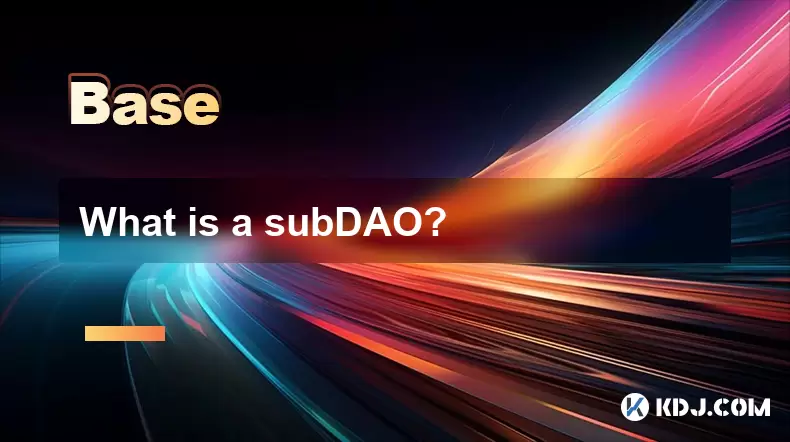
What is a subDAO?
Jul 03,2025 at 09:36am
Understanding the Concept of SubDAOA SubDAO, short for Sub-Decentralized Autonomous Organization, is a specialized entity that operates under the umbrella of a larger DAO (Decentralized Autonomous Organization). It functions with its own set of rules, governance mechanisms, and tokenomics while remaining aligned with the overarching goals of the parent ...

What is open interest in derivatives?
Jul 03,2025 at 02:49pm
Understanding Open Interest in DerivativesOpen interest is a critical metric used in the cryptocurrency derivatives market, particularly when analyzing futures and options contracts. It represents the total number of outstanding contracts that have not been settled or closed by either party involved. Unlike trading volume, which counts all trades made i...

What is a CME gap for Bitcoin?
Jul 03,2025 at 05:49pm
Understanding the Concept of a CME GapA CME gap refers to a discrepancy in price between the closing price of Bitcoin on the Chicago Mercantile Exchange (CME) and its opening price when trading resumes. This phenomenon occurs because the CME operates during specific hours, typically aligned with traditional market hours, while cryptocurrency markets ope...

What is a liquidation cascade?
Jul 03,2025 at 07:15am
Understanding the Concept of LiquidationIn the realm of cryptocurrency trading, liquidation refers to the process by which a trader's position is automatically closed due to insufficient funds to maintain the leveraged trade. This typically occurs when the market moves against the trader's position and their account equity falls below the required maint...

What is a hard fork coordinator?
Jul 03,2025 at 12:42pm
Understanding the Role of a Hard Fork CoordinatorIn the world of blockchain and cryptocurrencies, a hard fork coordinator plays a critical role during major network upgrades. A hard fork is a significant change to a blockchain’s protocol that makes previously invalid blocks or transactions valid (or vice versa). This type of upgrade requires all nodes o...

What is a Byzantine Fault Tolerance (BFT)?
Jul 03,2025 at 11:49am
Understanding the Concept of Byzantine Fault ToleranceByzantine Fault Tolerance (BFT) is a critical concept in distributed systems, particularly within the realm of blockchain technology and cryptocurrencies. It refers to the ability of a system to continue functioning correctly even when some components fail or behave maliciously. The term originates f...

What is a subDAO?
Jul 03,2025 at 09:36am
Understanding the Concept of SubDAOA SubDAO, short for Sub-Decentralized Autonomous Organization, is a specialized entity that operates under the umbrella of a larger DAO (Decentralized Autonomous Organization). It functions with its own set of rules, governance mechanisms, and tokenomics while remaining aligned with the overarching goals of the parent ...
See all articles

























































































